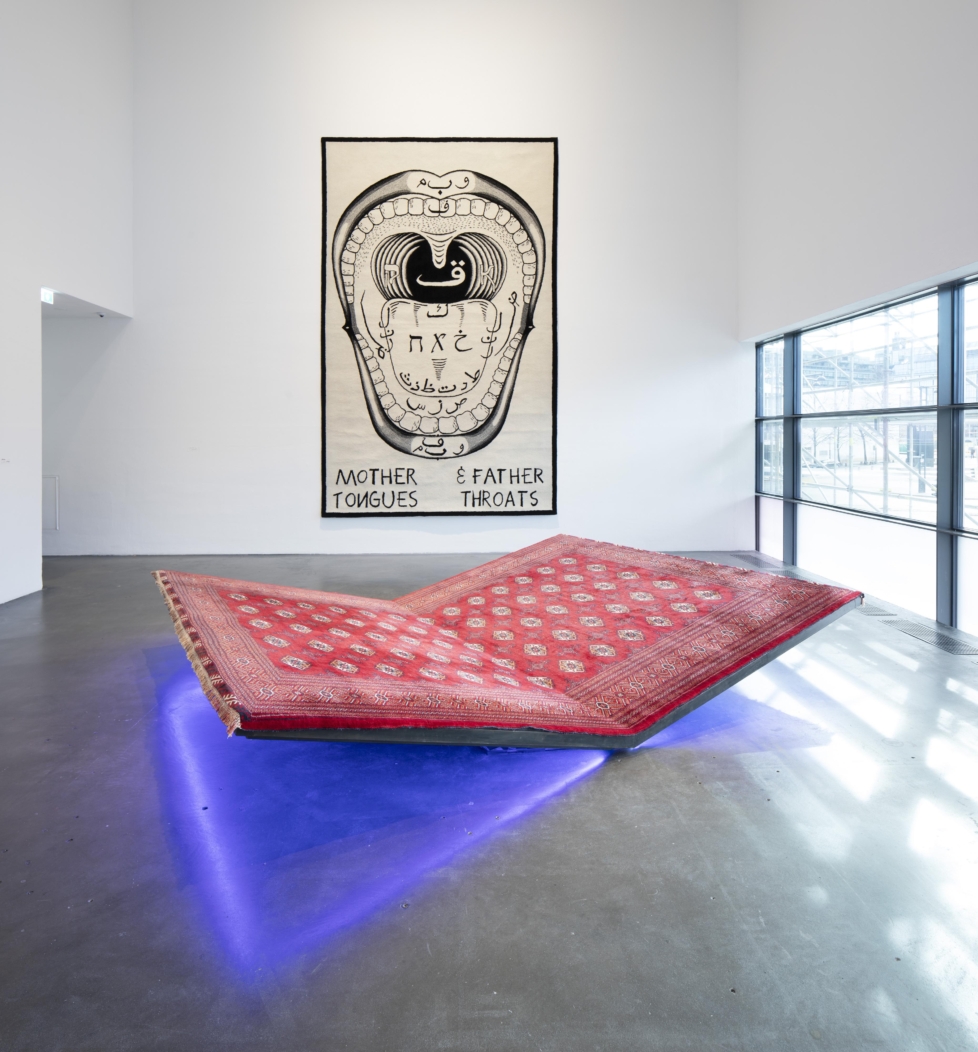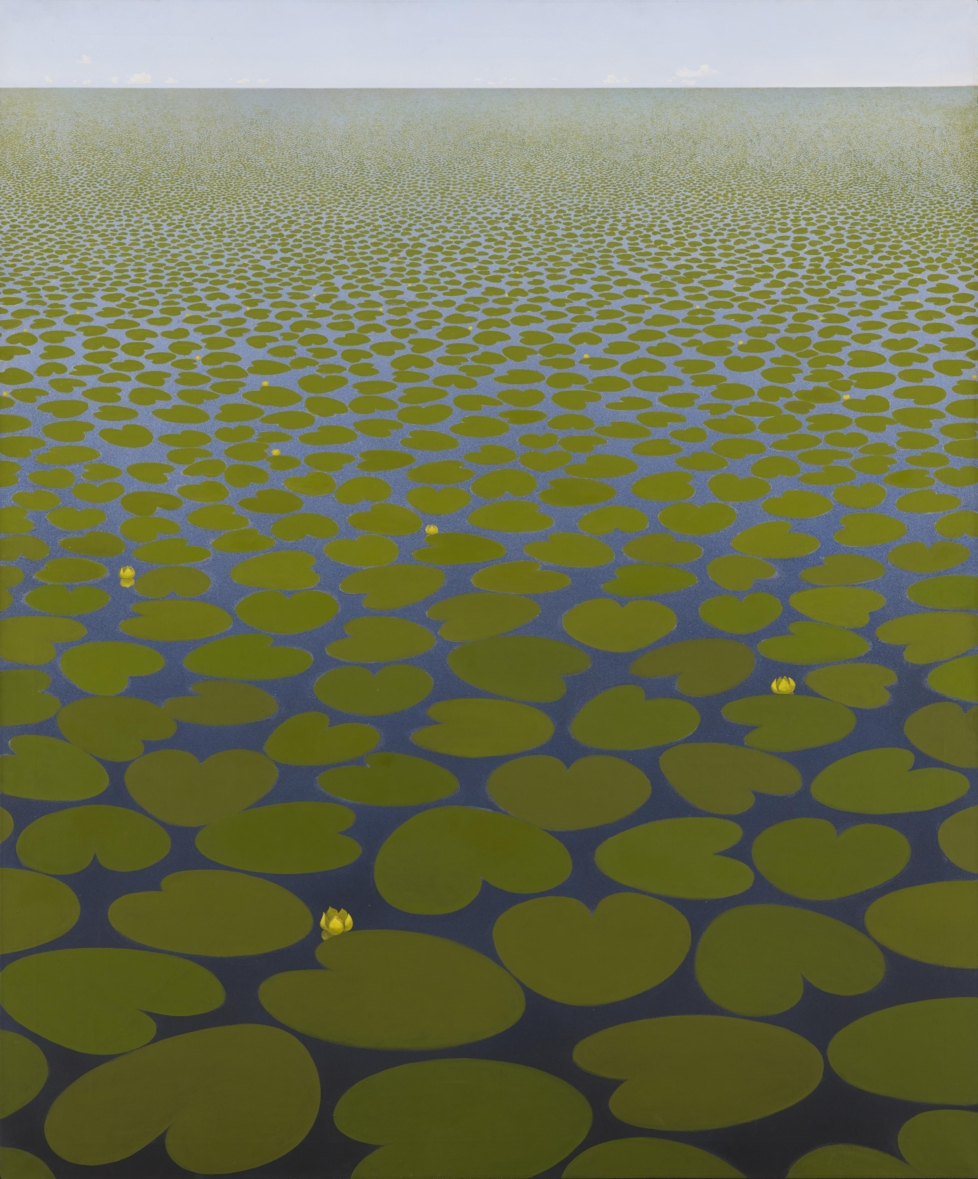
In an infamous episode of the Finnish Broadcasting Company’s culture podcast KC Karemo from last year, the former Eurovision singer and self-proclaimed auteur Anna Eriksson went on a rant about ARS22. A press release about the major exhibition at Kiasma had just been released and was studded with phrases like “empathetic encounters” and “community.” Granted, words like those have been tossed around sufficiently to render them clichés, but for the most part they tend to go unnoticed. With Eriksson’s not entirely unjustified public berating of Kiasma, the advance information about ARS ended up landing in a negatively charged context. How does an institution bounce back from being publicly accused of spreading a load of hot air?
The only solution to this problem seems to be to prove the haters wrong. It’s a difficult task, not least considering the past two incarnations of ARS. The survey of contemporary art that was first held in 1961 has since 2011 been based on curatorial themes of global relevance. The new direction began with the theme “Africa”; in 2017, it was digitalisation. Both exhibitions felt forced, especially the latter which was a fragmented and exhausting collection of half-assed gimmicks and annoying post-internet junk. This year sees a move away from geography and AI, towards “community,” or, as the show’s title indicates, Living Encounters.

Kiasma has five floors, but after just one it becomes clear to me that Museum Director Leevi Haapala and the curator João Laia have succeeded in their mission: this is an exhibition that really calls the shots. ARS22 presents ample, actual opportunities for those elusive “empathetic” and “common” encounters that so many curators have been chasing to no avail. There are no simplifications or banalisations, but despite the lack of simple answers or loud proclamations, the exhibition doesn’t appear as a dense affair only for the enlightened. An unusual balance between the intellectual and the inviting has been struck.
Well ahead of the opening, Kiasma announced that for the first time in ARS’s history contemporary art would be shown alongside older pieces, and that works by artists such as Marina Abramović & Ulay, David Wojnarowicz, and Francis Bacon would be included. This did not seem promising but it turns out to work quite well, as there aren’t too many of the older works. Howardena Pindell’s testament to racism in America, the video Free, White and 21 (1980), for example, places Frida Orupabo’s three-dimensional collage in a historical continuum which enriches the reading of both works.
The Moderna Exhibition 2018 comes to mind during my visit to Kiasma. It is as if Haapala and Laia have noted everything that went wrong in the Swedish exhibition and have been careful to avoid those pitfalls; formulaic symbols and glaringly obvious quotas are nowhere to be found. But then again, they have been careful not to declare exactly what the selection is about. More, they have carefully chosen evasive words. All the things that Eriksson dubbed “extremely boring,” and which on the podcast may have sounded like vacuous slogans, turn out to be careful formulations which are given meaning in the exhibition.

Living encounters – another risky choice of words – is a more accurate description than it first seems. The keyword here is “living”: in short, ARS22 is all about humans as physical beings. More precisely, the physical presence of museum visitors constitutes the corporeal side of things, while the art contributes comments on the cultural history of humanity. An example of this is the fact that the visitors are allowed to move around inside and interact with several of the works. We are allowed to walk on the white floor around Donna Huanca’s paintings and sculptures. We are allowed to sit down in Joar Nango’s detailed Girjegumpi/Sámi Architectural Library (2018–ongoing) and leaf through the precious books. There’s a bus to get onto (Sol Calero’s El Autobús, 2019), a rug to sit on (PrayWay from 2012 by Slavs and Tatars) and a fuzzy red room with welcoming cushions and benches heated to the same temperature as the human body (Laure Prouvost’s specially commissioned piece From the Depth of Our Heart To the Depth of The See, 2022).
I feel involved without being forced to participate. My way of looking is altered by the various surroundings. Despite the inclusion of absurd humour in both Anni Puolakka and Anna Estarriola’s work, I approach them in completely different ways. Puolakka’s short film From the Heart (2021–2022) is about an anthropomorphic parasite’s journey towards the heart of its human host – scary subject matter in a playful guise, not least as the film is shown inside a brightly coloured tent. Estarriola’s installation Interview – Auditioning for Eternity (2022), in which aliens make up a talent jury, is more frivolous. But it is shown on its own in a dark room and therefore feels more solemn. The backdrop of the orderly museum makes me take Estarriola’s light-hearted work more seriously than Puolakka’s intense subject matter in a cheerful setting.

Evaluating ARS22 solely on the basis of the static exhibition is to write about a truncated version of the whole. Among the works by the fifty-five participating artists and artist collectives are a number of performances which take place at regular intervals until the autumn. The biggest spectacle is Sun & Sea, the award-winning performance from the 2019 Venice Biennale. By including Rugilė Barzdžiukaitė, Vaiva Grainytės, and Lina Lapelytė’s super hit, ARS22 is taking a stand for performance art; a smart move, it probably works.
ARS22 ends in a sublime way on Kiasma’s fifth floor. Sheels Gowda’s Collateral (2007) creates various patterns of ash left behind by burnt incense, and humanity’s longing for meaning, belonging, transcendence, and spirituality is summarised in the heavy scent. The axiom is show, don’t tell; by saying very little, ARS22 manages to say quite a lot.
In the exhibition catalogue, Haapala lays into various colleagues as he writes about how the art world participates in the storytelling economy, by which he means the navel-gazing and individualistic narratives of superficial online activism that ultimately benefits the Mark Zuckerbergs of the world who profit from our personal data. It is true that in the last decade curators and institutions have tried to answer the question “who is speaking, whose stories are heard?” in all too lax ways – and with extremely boring results. On the other hand, Kiasma has a history of inane exhibitions even during Haapala’s tenure. They say that you shouldn’t throw stones if you live in a glass house, but perhaps ARS22 testifies to a future in which the museum’s intellectual ambitions remain high.









